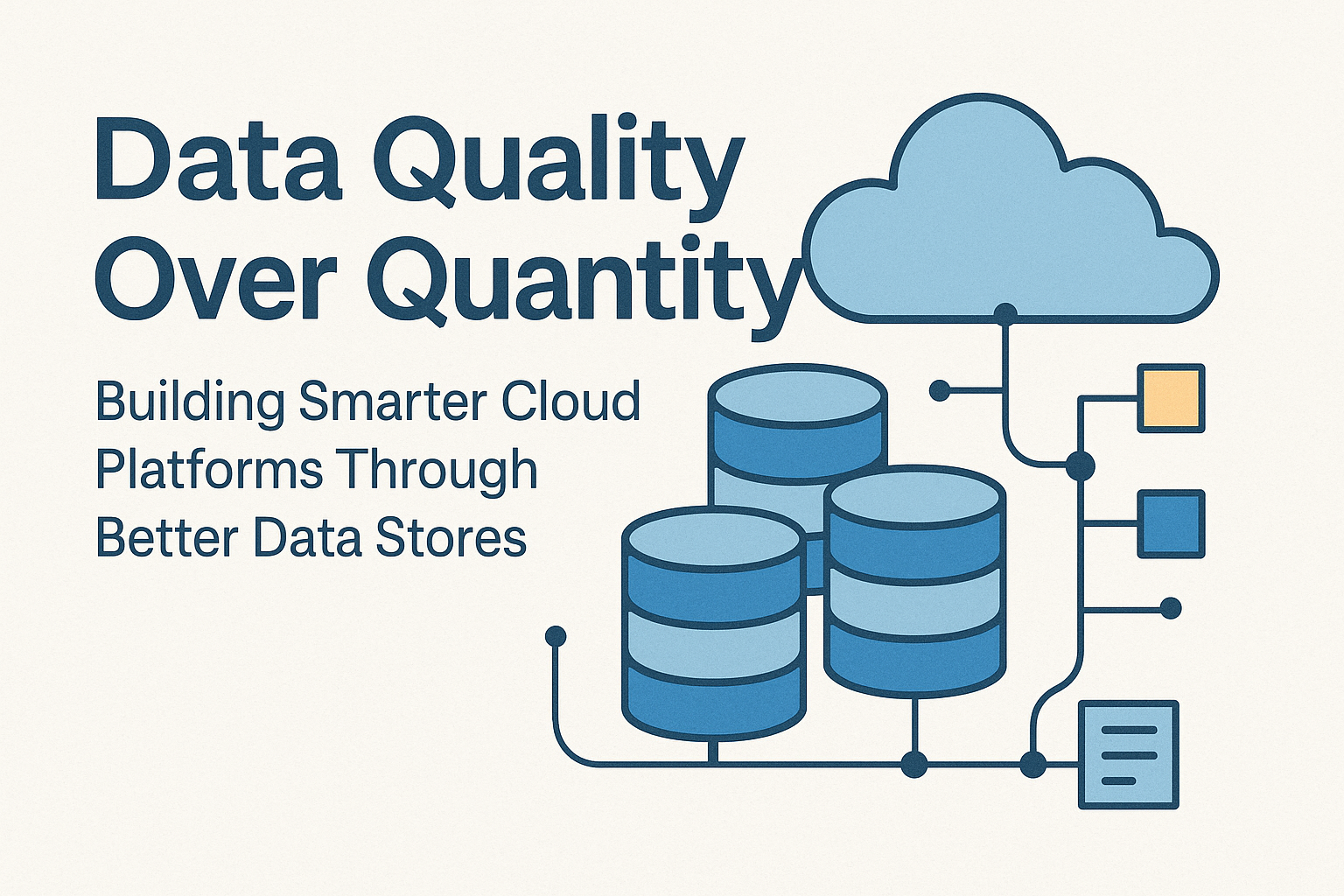In a world obsessed with big data, it’s easy to fall into the trap of thinking that more is always better. But in practice, quantity without quality leads to bloated systems, misinformed decisions, and technical debt. Especially in cloud environments where agility and scale are paramount, the true value lies in data integrity, structure, and meaningful integration.
Why Data Quality Matters More Than Volume
Collecting terabytes of data from disparate sources sounds impressive, but what happens when:
- Half the records are duplicates?
- Key values are missing or inconsistent?
- You can’t trace data lineage or trust the source?
These are not just technical inconveniences—they’re business risks. Poor data quality leads to:
- Ineffective analytics and misleading dashboards
- Wasted storage and compute resources
- Compliance and audit failures
- Slower product development cyclesIn a world obsessed with big data, it’s easy to fall into the trap of thinking that more is always better. But in practice, quantity without quality leads to bloated systems, misinformed decisions, and technical debt. Especially in cloud environments where agility and scale are paramount, the true value lies in data integrity, structure, and meaningful integration.
Clean, reliable data enables better decision-making, automation, and product innovation.
The Role of Proper Data Stores
A data store isn’t just a place to “put” data. It’s a structured system that:
- Enforces schema and validation rules to maintain consistency
- Supports indexing and searchability for fast querying
- Manages metadata for traceability and governance
- Integrates with upstream and downstream systems through well-designed APIs
In a cloud-native architecture, choosing the right type of data store (relational, time-series, document, graph, etc.) based on use case is critical. Equally important is how that store is maintained, monitored, and evolved.
How a Cloud Platform Should Support Data Integration
Modern cloud platforms must go beyond simple storage and offer tools to integrate multiple data systems cleanly and securely. This includes:
1. Data Ingestion Pipelines
- Support for real-time and batch data ingestion
- Automated validation and transformation steps
2. Unified Data Layer
- Abstraction of underlying sources
- Common schema layer to normalize data across formats
3. Scalable APIs and Event-Driven Architectures
- Enable apps and services to subscribe to meaningful data events
- Decouple producers and consumers for flexibility
4. Built-in Governance and Auditing
- Track data origin, changes, and access logs
- Ensure compliance and reliability
Final Thoughts
The future of digital platforms isn’t just about collecting more data. It’s about collecting the right data, storing it correctly, and connecting it intelligently. As cloud architects, our job is to ensure that infrastructure decisions support business outcomes through trusted, integrated, and actionable data.
Less noise. More signal. That’s the foundation of meaningful digital transformation.



